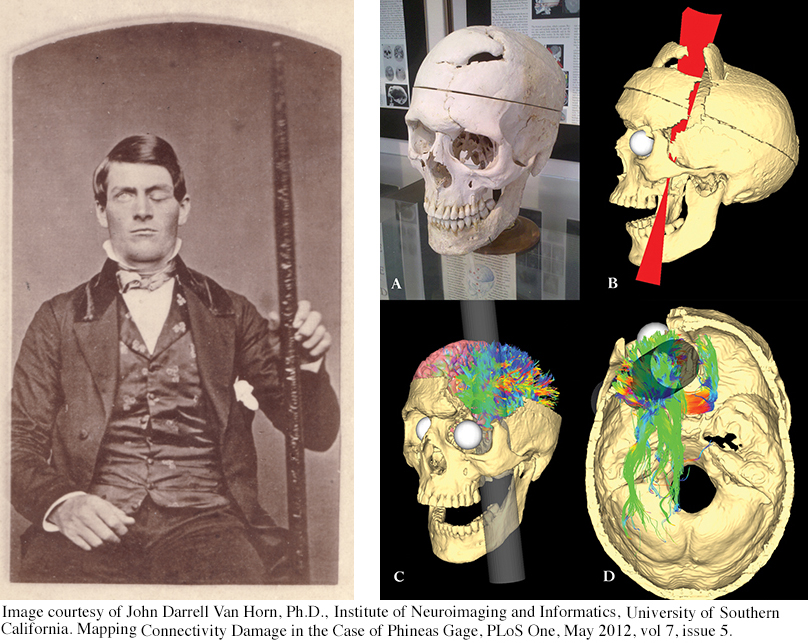
Focus on the Frontal Lobes: The Famous Case of Phineas Gage Early interest in the frontal lobes was sparked by the famous case of Phineas Gage, a railroad foreman who suffered a horrendous accident in 1848. A freak explosion shot a three- t- t- d-
After Gage’s death in 1861, his physician proposed that Gage’s personality changes were caused by damage to his frontal lobes (Harlow, 1869). More than a century later, contemporary neuroscientists studying Gage’s skull confirmed that Gage’s left frontal lobe had been severely damaged (Damasio & others, 1994; Ratiu & Talos, 2004). More recently, models created by neuroscientist John Van Horn and his colleagues (2012) point to probable damage to the white matter connections between Gage’s frontal lobe and other brain regions associated with emotion and memory. This disconnection may have contributed to Gage’s personality changes and lack of emotional control after the accident.